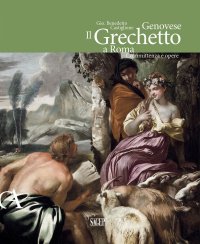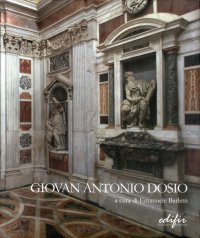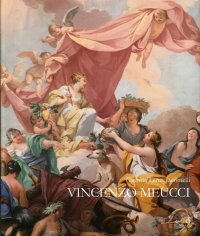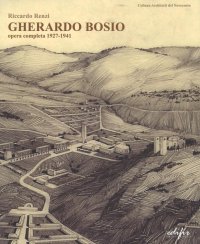Gio. Benedetto Castiglione Genovese. Il Grechetto a Roma. Committenza e opere
Edited by Orlando Anna and Francesco Rotatori.
Genova, 2023; paperback, pp. 304, col. ill., cm 23x29.
cover price: € 150.00
|
Books included in the offer:
Gio. Benedetto Castiglione Genovese. Il Grechetto a Roma. Committenza e opere
Edited by Orlando Anna and Francesco Rotatori.
Genova, 2023; paperback, pp. 304, col. ill., cm 23x29.
FREE (cover price: € 150.00)
Giovan Antonio Dosio Da San Gimignano Architetto e Scultor Fiorentino tra Roma, Firenze e Napoli
Edited by Emanuele Barletti.
Photographs by BACHerin Paolo and Saverio De Meo.
Prima edizione 2011.
Firenze, 2011; bound, pp. 844, b/w and col. ill., tavv., cm 24x28,5.
FREE (cover price: € 98.00)
Vincenzo Meucci
Co-Editore: Cassa di Risparmio di Firenze.
Firenze, 2015; hardback, pp. 304, col. ill., cm 25x29,5.
(Arte).
FREE (cover price: € 50.00)
Gherardo Bosio. Opera Completa 1927-1941
Firenze, 2016; paperback, pp. 368, b/w and col. ill., cm 23x28.
(Architetti del Novecento. Storia e archivi).
FREE (cover price: € 60.00)
Archaeological Campaigns below the Florence Duomo and Baptistery (1895-1980)
Toker Franklin
Harvey Miller Publishers
English Text.
London, 2013; hardback, pp. 350, b/w and col. ill., cm 24x28.
series: The Florence Duomo Project (HMFDP 2)
ISBN: 1-905375-52-2 - EAN13: 9781905375523
Subject: History of Architecture,Religious Architecture/Art
Places: Florence
Languages: 
Weight: 2.5 kg
Archaeological Campaigns below the Florence Duomo and Baptistery, 1895-1980 presents the results of one of the major archaeological campaigns of our times: the decade-long excavation below Florence's cathedral of S. Maria del Fiore.
The book presents a cutaway vision of a great city that would be hard to match anywhere, exploring a site that was in use for 1500 years, from the founding of the Roman settlement of Florence to the burial there of Giotto and Brunelleschi. In terms of structures, the excavation uncovered a Roman house, an Early Christian basilica, a Carolingian crypt, and further rebuildings from the eleventh century and later. For artifacts, the findings constitute a virtual encyclopedia of ancient and medieval art in mosaics, frescoes, the grave of Florence's earliest documented saint, the first elaborate tomb of the Medici, and outstanding examples of Roman and medieval glass, metalwork, and ceramics. Forty-one specialists in material culture and archaeological science report on those finds in the book, and hundreds more illustrations are carried on the author's website, www.franklintoker.com.
But the findings from below the Florence Duomo are not limited to art history. The Roman house gives a glimpse of life on the Italian peninsula in the half-millennium between Emperor Augustus and the Ostrogoth king Theodoric. The construction of a large basilica with its rich mosaic floor marks the evident revival of a battered city: a turn of events entirely unexpected from the few other fragments of early Florentine history that survive. The later additions to the church of S. Reparata (as the early cathedral was titled by then) also constitute rare remains from the turbulent centuries that followed.












